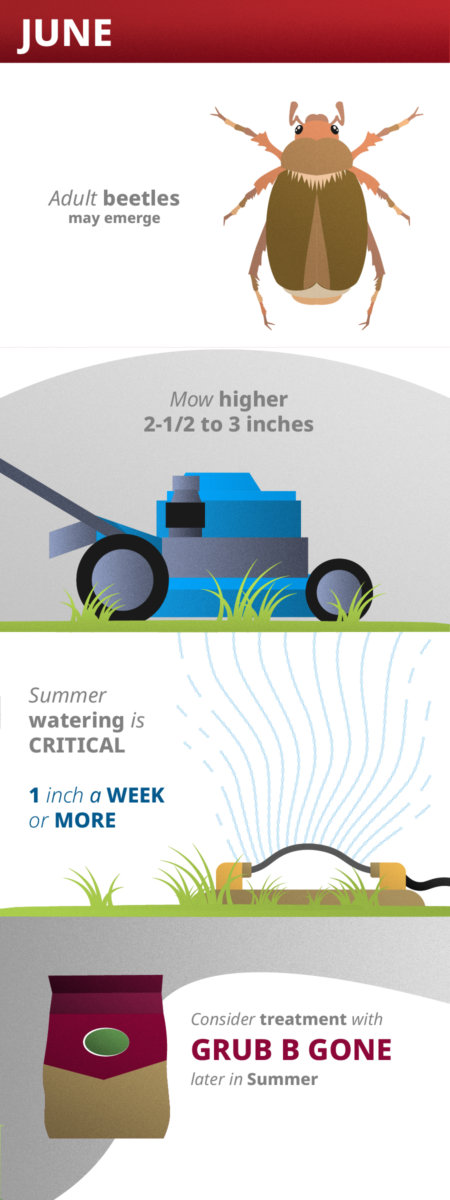 What are chafer beetles and why should I care?
What are chafer beetles and why should I care?
The European chafer beetle is a serious lawn pest that is spreading and causing lots of problems throughout the Seattle area. So far, the heaviest concentrations are in the South End, such as Rainier Valley, West Seattle and Burien.
The chafer beetle “could pose the biggest threat in nearly half a century to turf grass lawns and athletic fields in the Pacific Northwest,” according to The Seattle Times.
Many birds and other animals find the grubs to be a tasty treat. People describe lawns that crows have ripped to shreds while looking for beetle larvae.
Chafer beetles appear to be more of a problem on lawns that are dry, thin and unhealthy. If you keep your lawn healthy, it should help prevent chafer beetles from invading and help restore any damage if they do invade.
What happens in June
Beetle grubs have been living underground through fall and winter, feeding on grass roots and damaging turf.
In late spring adult beetles emerge from the ground. Because they tend to be more visible this time of year, they are often called June bugs.
The beetles swarm into trees or shrubs to mate. This often happens at night, so you may not see much evidence of adults beetles.
After they mate, female beetles tunnel down beneath the grass and lay up to 50 eggs. The eggs hatch about two weeks later, and grubs start feeding.
Managing chafer beetles: what you can do now
It is important to take steps to keep your lawn healthy through the summer.
Mow higher. Raise your mower height to 2-1/2 to 3 inches. Higher grass shades the soil, reducing evaporation. And mulch mowing is a good idea. It feeds the lawn, reducing fertilizer needs.
Summer watering is critical. Your lawn needs one inch or more each week. Water deeply to encourage deep rooting and reduce drought stress. It is best to water once or twice a week rather than daily. Watering frequency depends on whether you have clay or sandy soil.
Consider treatment with Grub B Gone later in summer. This biological control product (it is BTG, or Bacillus thuringiensis galleriae) is safe for people and pets. The active ingredient – a live, soil-borne organism – is released down into the soil and root zone where grubs live. As grubs eat plant roots, they also ingest the active ingredient, effectively putting a stop to them and their destruction.
Grub B Gone can be an effective product if used correctly. It is applied with a fertilizer spreader, and the lawn must be watered deeply after application so it penetrates the root zone.
We don’t recommend applying chemicals to treat chafer beetles. Even if the chemicals are “naturally” derived, they can kill worms and beneficial insects.
Managing chafer beetles can be tough. This pest is a big deal for Northwest lawns. This year we are publishing three blog posts with steps you can take each season. Here is the post we published about what to do in March to manage chafer beetles. Look for another post in September.

Trackbacks/Pingbacks